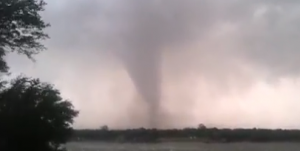At least 6 killed, dozens hurt and over 100 homes damaged in Granbury tornadoes
Hood County Sheriff Roger Deeds said at a press conference this morning that all six people who died were adults, although he did not release their names or other details.
He said 37 others were known to be injured, and around 110 homes damaged or destroyed. Sheriff Deeds said the death count could rise as seven people remain unaccounted for and nearby rural areas had not been searched thoroughly. But he did not expect anyone else to be found in the rubble.
At iMGA we are honored to be able to help restore people’s belongings after severe weather events. But every spring we are reminded that:
- Nature is an awesome, powerful and unpredictable force, and
- Some losses simply cannot be replaced.
We are proud to provide insurance for thousands of Texas homeowners and we work every day to live up to the trust placed in us by our agents and customers, but we often wish we could do even more. Our thoughts and prayers are with everyone in Granbury, and all the others who have been and will be affected by severe weather.
Some video from Granbury:
